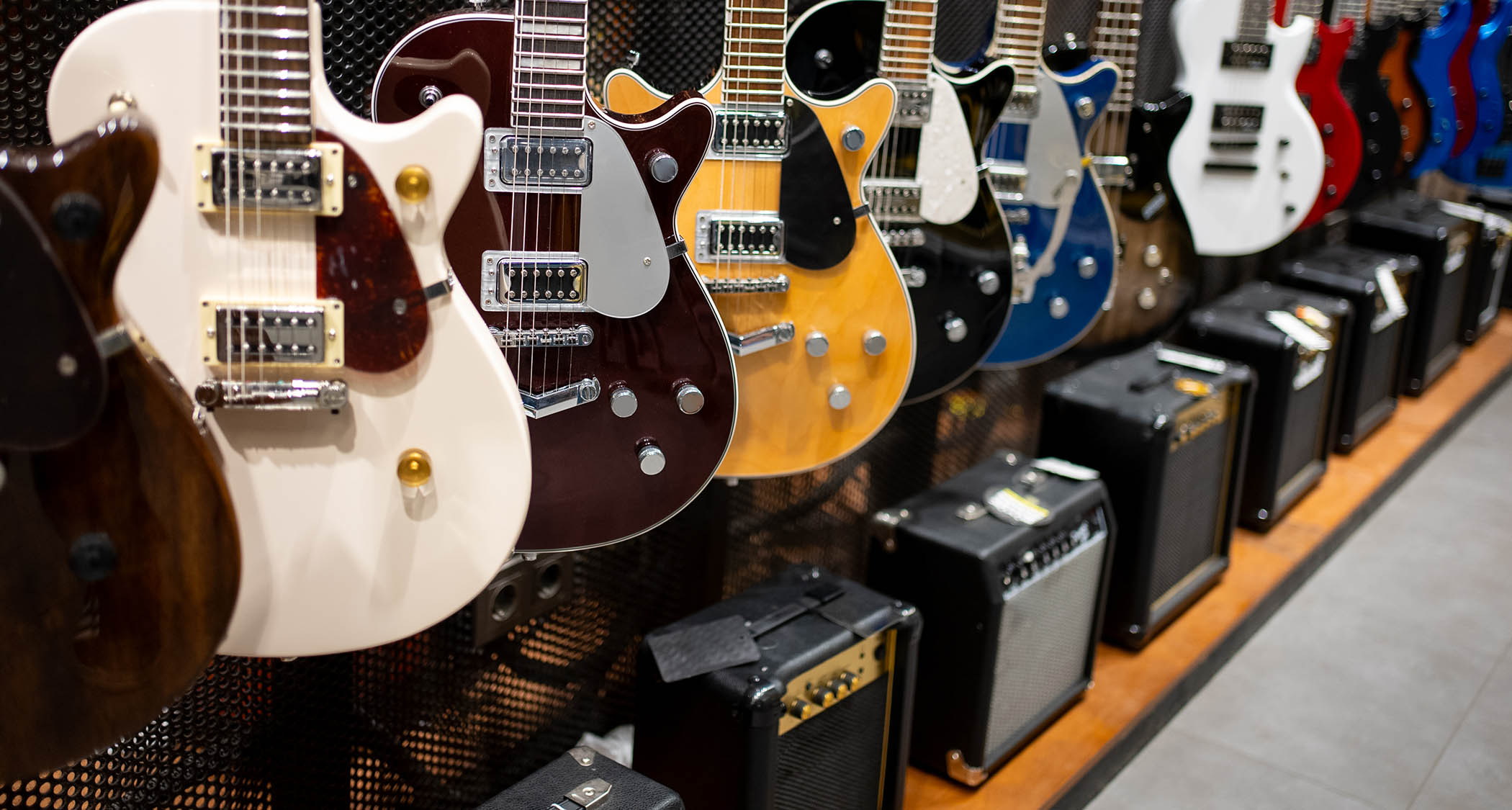Best combo amps 2025: the best all-in-one amps for every budget
The ultimate tube, solid state, and modeling combo amps for every genre, from Motown to metal and everything in between
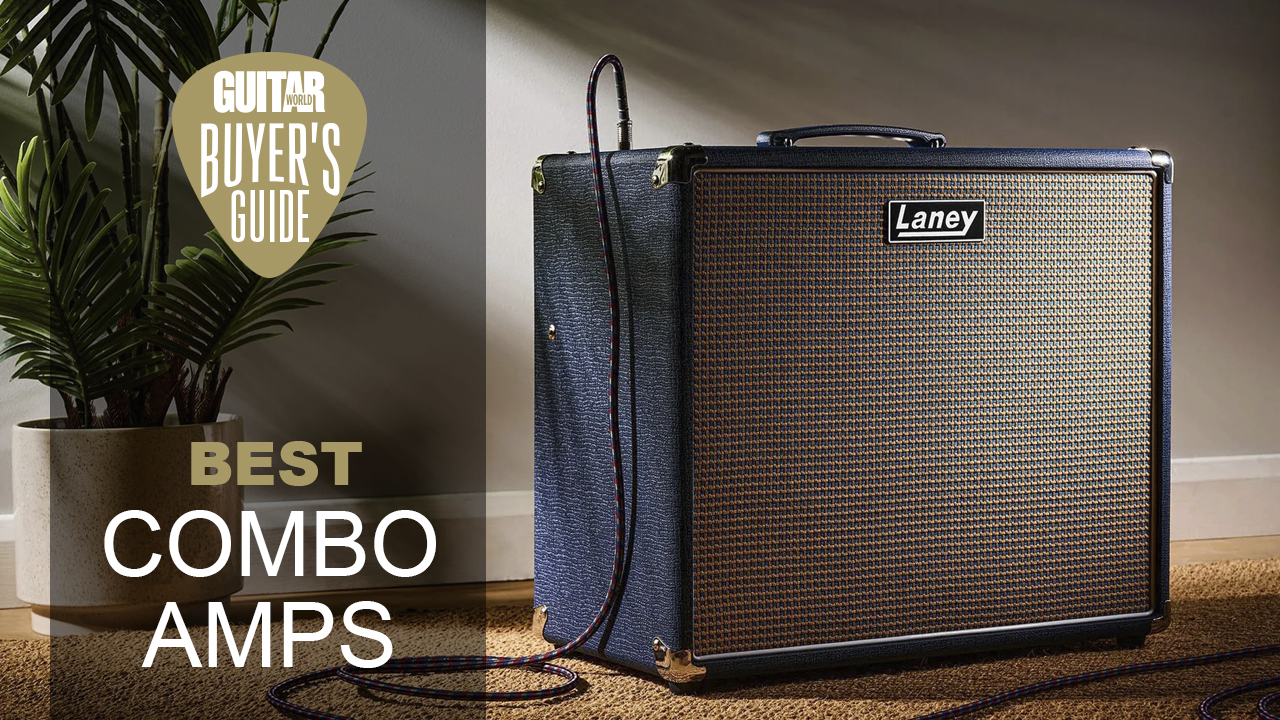
I've been a combo amp user for pretty much my entire playing career. As a regularly gigging guitarist, I much prefer carrying my amp and speaker around with me rather than relying on whatever cabs might be at the venue. For me, the best combo amps allow you to take your carefully crafted tone wherever you go, whether it's the studio, stage, or just the rehearsal room.
Admittedly, carrying a tube amp around is hard work, but every time I've had to play through an amp other than my own, it just doesn't feel right. A combo amp combines the amplifier and speaker, so what you hear at home or in the practice room is what you're going to get when you play live or hit the studio.
I've picked out a huge variety of combo amps in this guide, purely because I appreciate amps are a very personal thing, and there's no one-size-fits-all option. I have separated my top picks by use case however, which should make things easier for you to decide if you've not got a huge knowledge of combo amps. If you're really scratching your head, then do make sure you check out my FAQs section, where my and the Guitar World team have answered loads of common questions.
My top picks
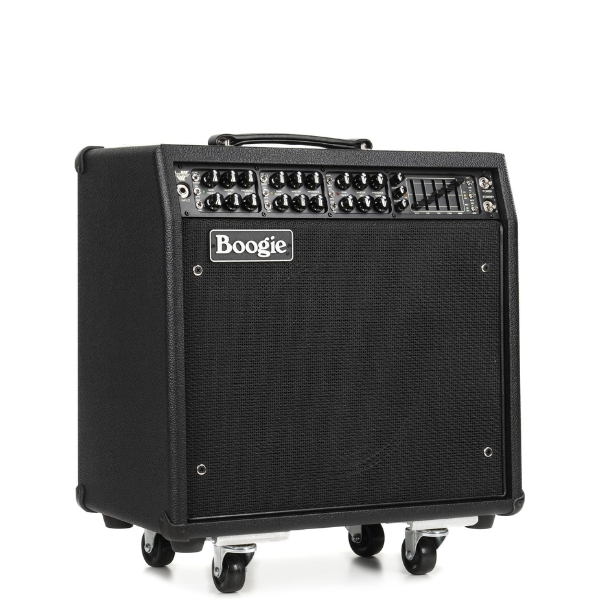
One of the most incredibly versatile amps we've ever played, the Mesa/Boogie Mark VII is an absolute triumph, giving you tones from glassy cleans to full-on metal distorted mayhem.
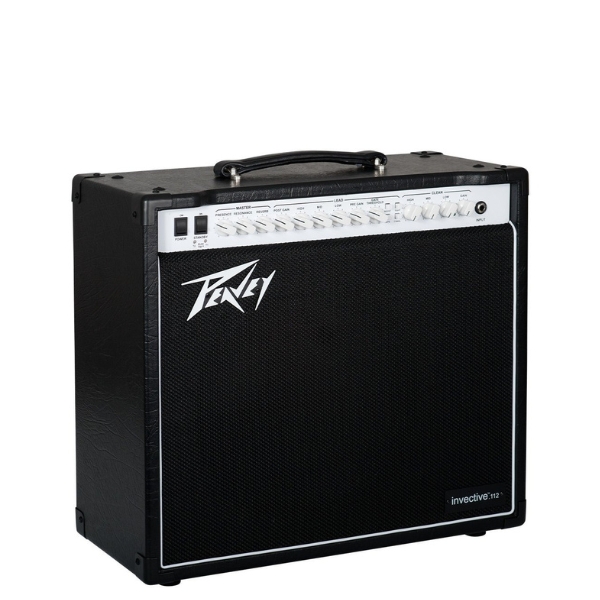
A tube amp designed in collaboration with Misha Mansoor of Periphery, the Peavey Invective .112 has an awesome clean channel, and of course, as much gain as any modern metal player can handle.

Possibly the most popular gigging amp of the modern age, the Fender Blues Junior IV is a staple on stages all over the world thanks to its versatile tone and portable size.
Best overall
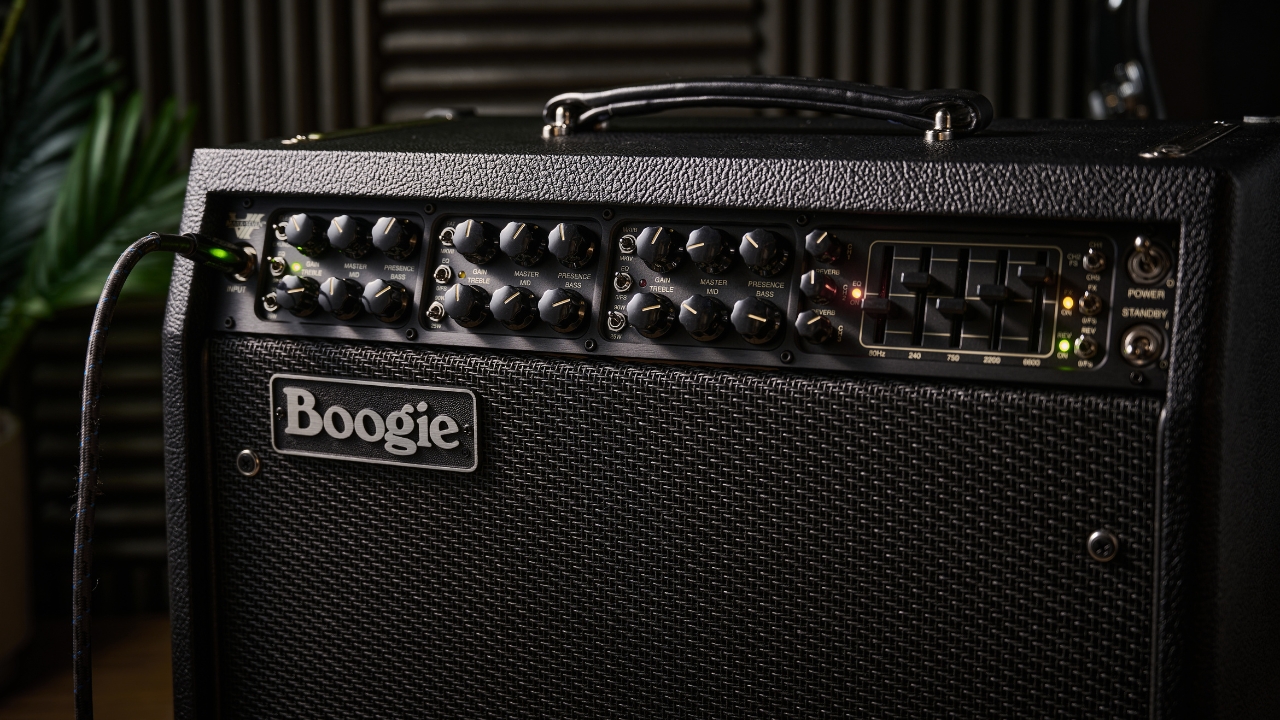
Specifications
Reasons to buy
Reasons to avoid
✅Buy if you want a super-versatile combo: Capable of pretty much any tone you can imagine, the Mesa/Boogie Mark VII has three channels as well as a silent output for recording
❌Avoid if you're on a budget: That versatility comes at a huge price point, so if your budget is small you'll need to look elsewhere.
Apparently, the Mesa/Boogie Mark VII is so good the company decided to skip the Mark VI entirely, and we’re inclined to agree that this was a good move. The Mark VII takes everything great about the entire Mark series, as well as Dual and Triple Rectifiers Mesa/Boogie is so famous for.
A lot of amps claim to be versatile, but the Mark VII is astoundingly flexible, and able to deliver a ridiculous amount of tones. Three channels with three modes ensure you’ll have all the options you need, and we love the fact they include cabinet impulse responses for silent recording and practice.
In terms of sound, it’ll do everything from glassy cleans to high gain grind, and there are so many options it's well worth a browse of the manual to get the best out of it. It will do British amp tones, American amp tones, gritty, crunchy, and pretty much anything else you can think of. It’s the most versatile amplifier we’ve ever played, and well deserving of the top spot in this guide.

"If you’re paying $3,799/£4,199, you would rightly expect an incredible amp, and we’d certainly say that is true of this latest Mark VII. It can genuinely hold its own in any genre, with an amazing amount of projection, spread and thump from such an unassuming looking 1x12 cab. Obviously, there are options to hook up to extension cabs, but we really didn’t feel the need."
Read more: Mesa/Boogie Mark VII 1x12 review
Best for metal
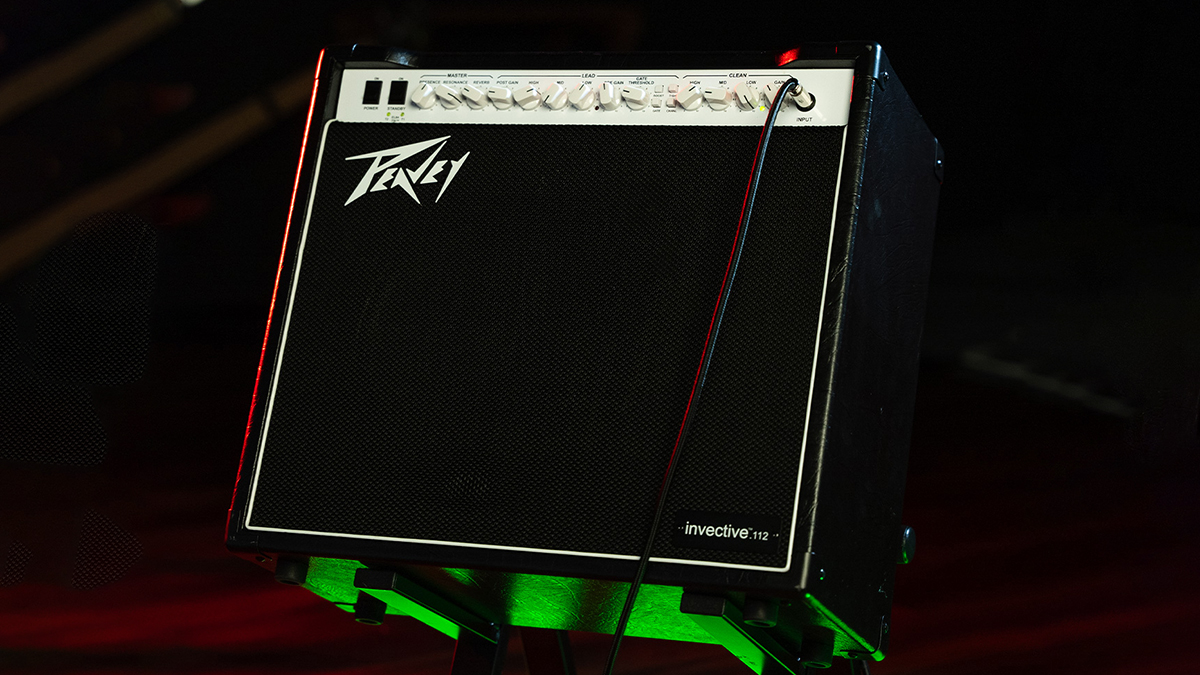
Specifications
Reasons to buy
Reasons to avoid
✅Buy if you want a metal amp: Delivering some superb high-gain tones, this is a great combo amp for all types of metal
❌Avoid if you mainly play clean: This amp has a very specific clean sound that might not suit all types of players.
Designed alongside metal maestro Misha Mansoor of Periphery, there's no doubting the Peavey Invective .112's metal credentials. A 20-watt tube amp, it gets its hairy metal sound from two EL84 power amp tubes and three 12AX7 tubes in the preamp.
There's loads of useful functionality for the modern guitar player too, including switchable power output modes that take it down to 5 watts and 1 watt respectively, making it a viable solution for playing at home. Add in two channels with independent EQs, and you've got a lot of flexibility for a variety of situations.
It might be relatively small, but boy does this thing deliver a big sound. That Celestion Vintage 30 speaker is superb, delivering an astonishingly powerful low end that's very controllable with the resonance control and tight function. With a boost function and built-in gate, this is a fantastic amp for metal players who want bags of saturation.

"Like the MH head, the Invective .112 combo goes above and beyond in providing a well thought-out and comprehensive configuration of gig-worthy, pro features like independent EQ for each channel, numerous footswitchable functions and excellent DI capabilities."
Read more: Peavey Invective .112 review
Best for gigging

Specifications
Reasons to buy
Reasons to avoid
✅Buy if you want to gig: This is one of the world's most popular gigging combo amps for very good reason, and is a fantastic pedal platform.
❌Avoid if you want modern-metal tones: It has a nice overdrive sound, but won't go all the way to metal sounds.
The Fender Blues Junior has been one of the most iconic small combo amps of the last few decades, and to be honest, we can understand why. The amp we’re talking about here is the most recent mark IV version, so let’s see what Fender has going on under the hood here.
One speaker, one channel - the Blues Junior IV is truly simple and straightforward to use, and with that simplicity comes great joy. This mark IV variant adds both modified preamp circuitry and a smoother sounding spring reverb - delivering that timeless Fender tone that we all know and love. The 12” A-type Celestion is well balanced and sweet sounding, delivering crisp highs, a full, warm bass response and laid back midrange. It sounds delightful.
Now, it’s not a 100-watter like some of the amps we’ve seen so far, but don’t be fooled by the lower output. This thing can get loud, and do it very tastefully too. Either ride the input and master volume controls and set it as clean as you can, or dime the input volume, engage the ‘fat’ switch and bathe in the harmonic glow of those ECC83’s. Your call - but it’ll sound pretty good either way.

"When I hear something is new and improved, my gut tells me it’s a repackaged version of the same thing. But after spending five minutes with the IV, I can immediately tell it’s an entirely new beast of an amp. Fender’s modification to the IV’s preamp circuit changed the harshness of its former iterations to a more powerful and bolder-sounding amplifier with moxie."
Read more: Fender Blues Junior IV review
Best small combo
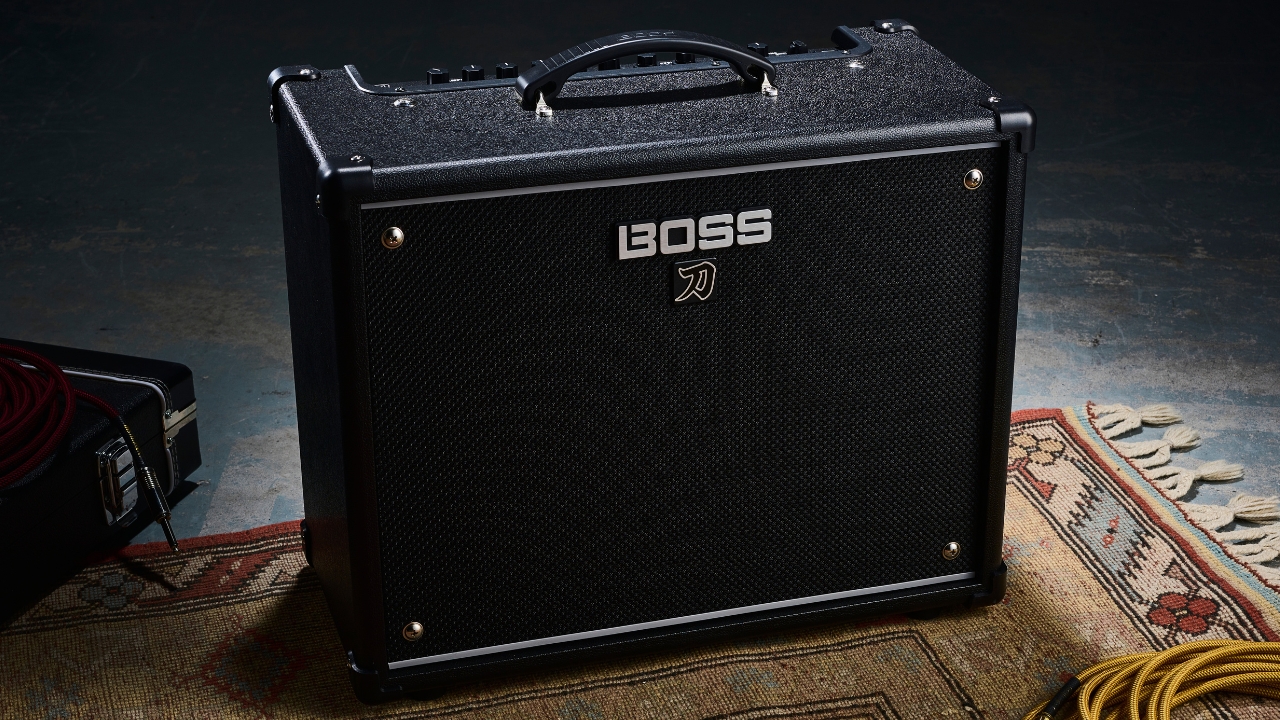
Specifications
Reasons to buy
Reasons to avoid
✅Buy if you want a small combo: Being a modeling amp, the Katana can deliver excellent volume in a small package, and it's lightweight too.
❌Avoid if you want tube-tones: If you want genuine tube tones, this will get you close, but there are other amps in this guide that deliver the real deal.
The Katana series is known by many for being able to do pretty much anything, and with the latest Gen 3 editions, things have only gotten better. With versatility at its core, the six onboard amps will cover many - if not all - musical scenarios, with Clean, Crunch, Pushed, Lead, Acoustic, and Brown amp models.
Boss has also sprinkled in a whole bunch of fantastic effects, making the Katana a dark horse of a modeling amp for gigging and bedroom musicians. The 12” custom speaker can shift some serious air if it needs to.
It’s not all flapping trousers and bleeding ears though, with an onboard attenuator allowing you to switch down to 25W - ideal for most rehearsals - and 0.5W - which makes neighbor-friendly bedroom shredding entirely possible.
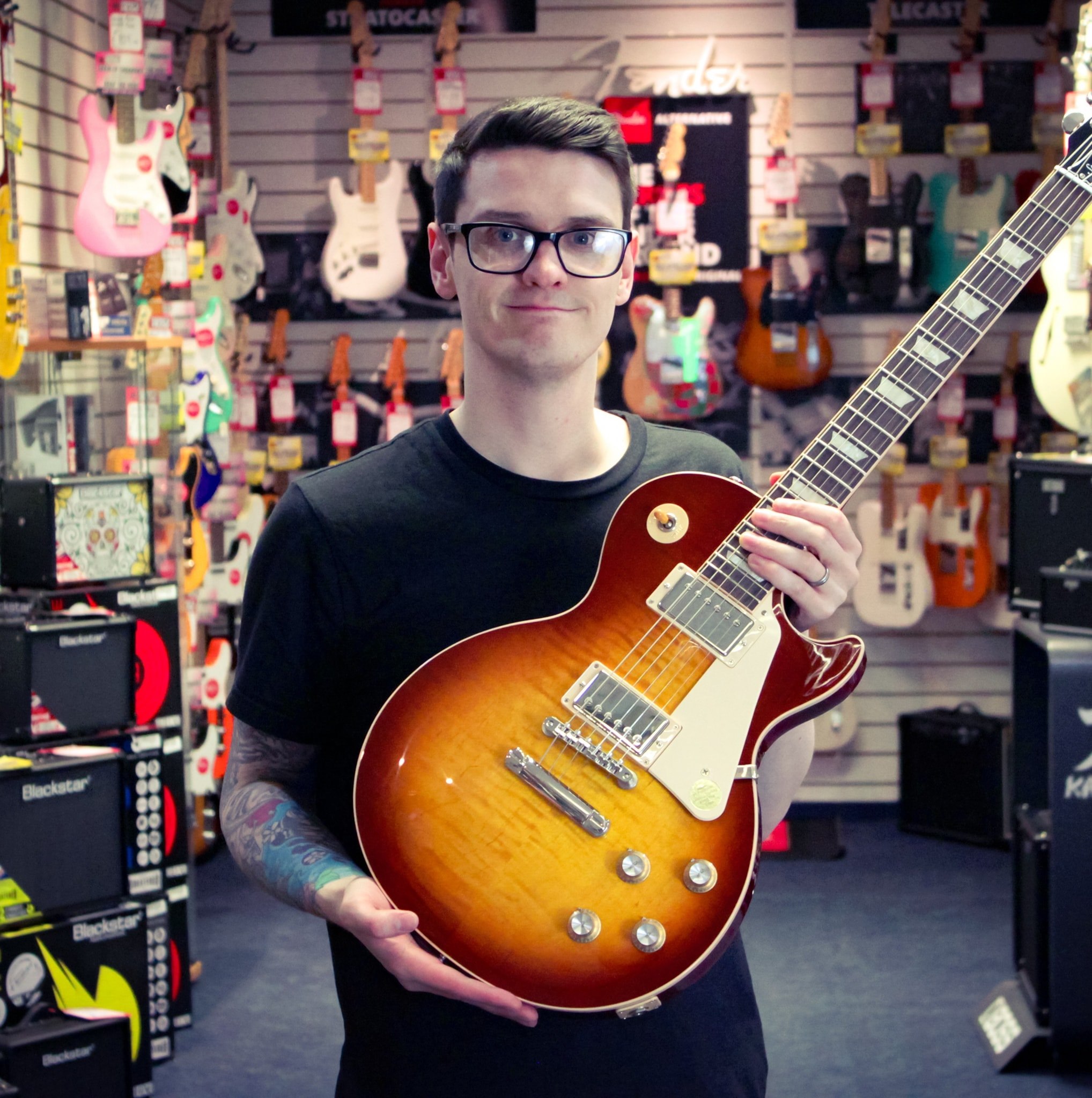
"While we were fans of the previous iterations, it’s immediately obvious that Boss has gone to great lengths to improve the overall sound quality of the Katana MKIII, resulting in an amplifier that sounds more alive with sweetened highs, richer harmonics in the mid-range, and a tighter, more defined low-end."
Read more: Boss Katana 50 Gen 3 review
Best solid-state
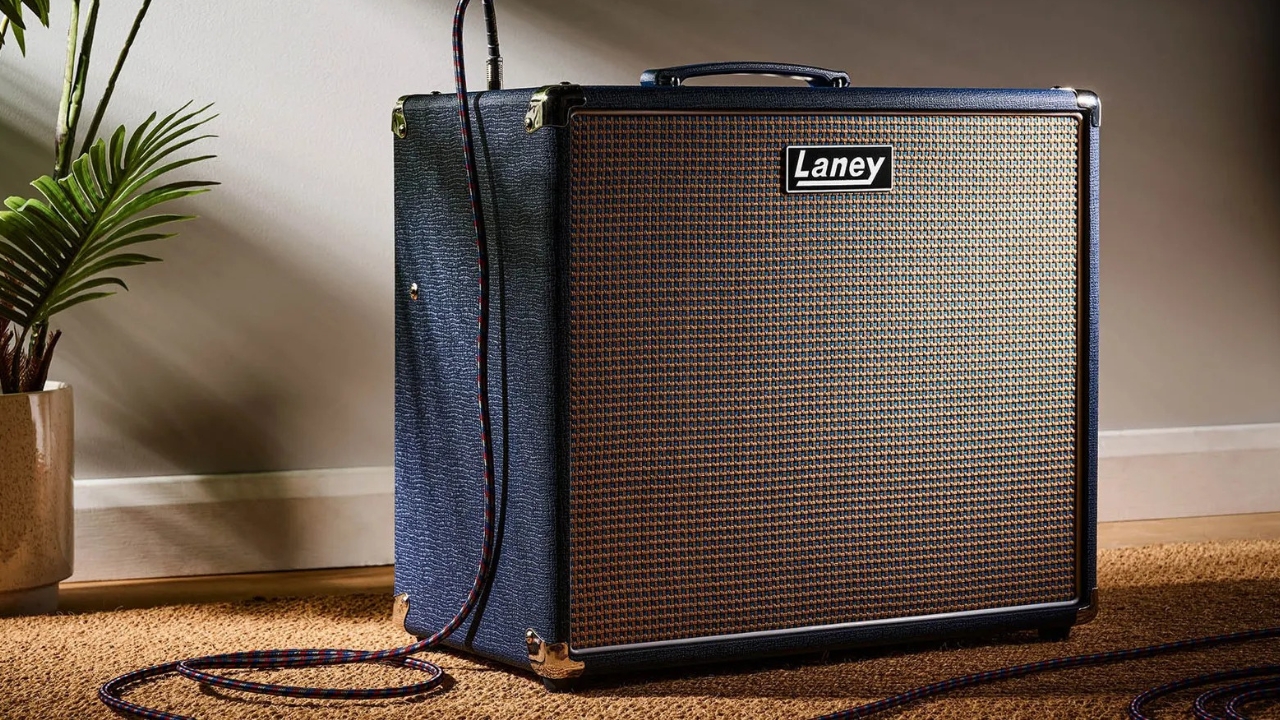
Specifications
Reasons to buy
Reasons to avoid
✅Buy if you want tube tones without the weight: Despite being a solid-state amp, this amp sounds remarkably similar to a tube amp, and delivers a lot of volume
❌Avoid if you want hands-free channel switching: There's no matching footswitch available for this amp, so look elsewhere if you want hassle free, hands-off channel switching.
Aiming to pack tube-like tones into a solid-state package, the Laney LFSUPER60-112 Combo gives you all that valve character of the real deal without the back-breaking weight. It's an attractive-looking amp with its blue and silver color scheme, and offers two channels with plenty of flexibility.
It's beautifully touch-sensitive on the clean channel, responding exactly as we'd expect from an actual tube amp. Add in the boost switch and those bluesy licks start to feel reminiscent of a classic, pushed valve amp. Switch to the lead channel and we're greeted with plenty of gain, reminiscent of the highly sought-after EVH 'brown' tone.
The onboard reverb is superb, delivering loads of ambience that sits somewhere between a spring and room sound. You also get tremolo and chorus built in, both of which deliver some fantastic vintage tones. The larger cabinet size helps deliver a wonderfully full voice, so you can rest assured it handle gigging just fine.
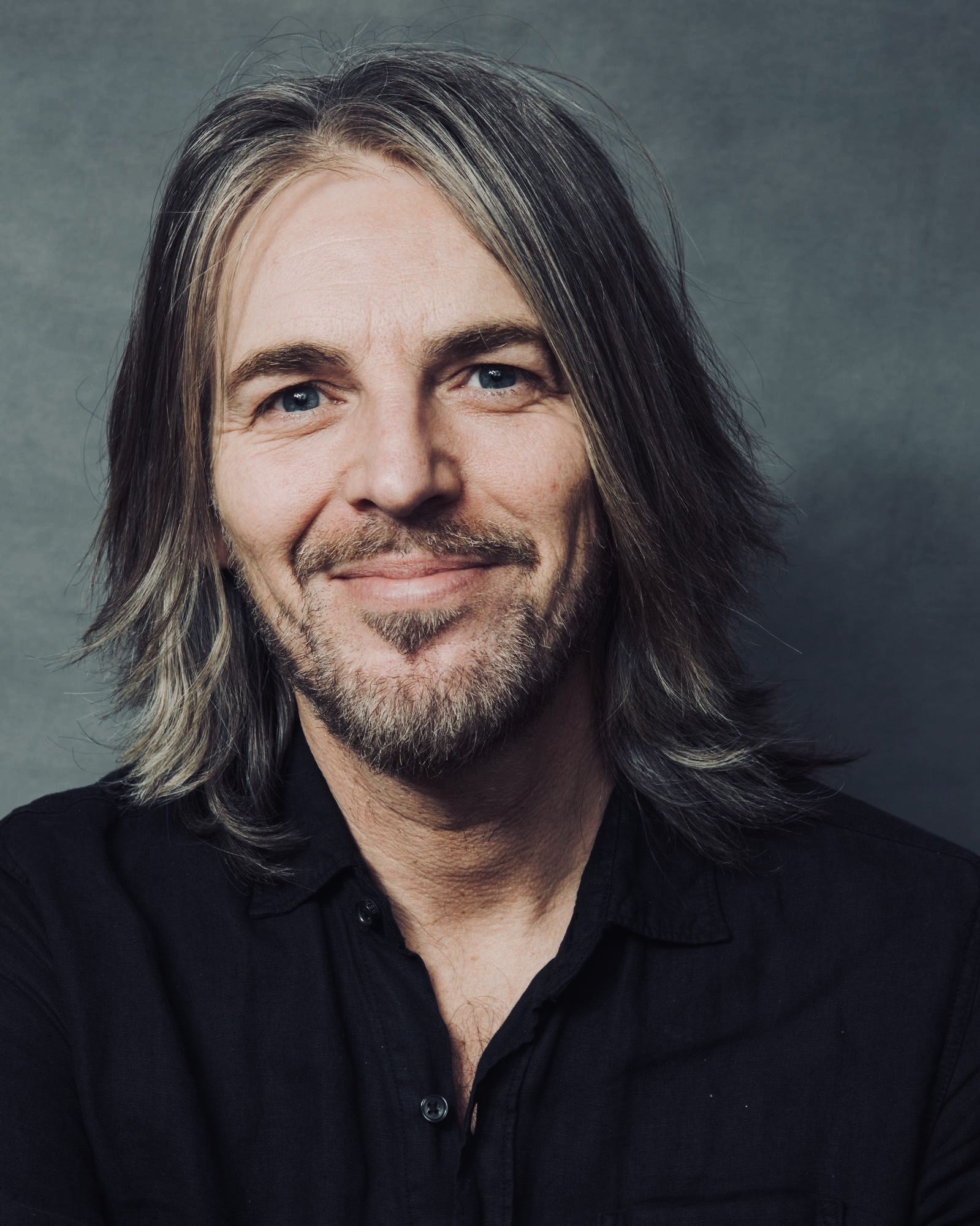
"Here’s an amp that we thoroughly enjoyed using. Its ability to speak with a valve-like voice at stage levels in a package that’s liftable with one hand is something many of us could only have dreamed of in our younger days. The flawless integration of the effects and speaker emulation is a testament to Black Country Customs’ efforts, too."
Read more: Laney LFSUPER60-112 Combo review
Also consider
The above combo amps should have most guitarists' needs covered, but we appreciate there's not a one-size-fits-all amp for everyone. So here are some more great amps we've reviewed for your consideration.
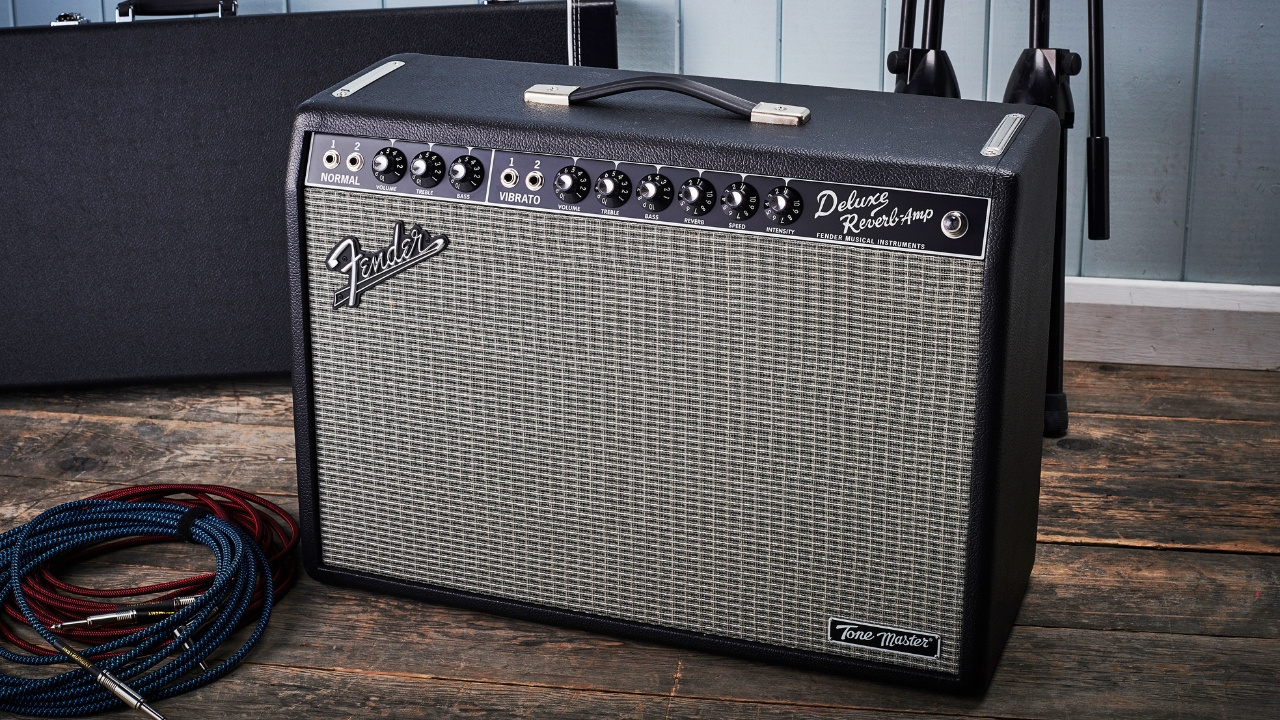
Specifications
Reasons to buy
Reasons to avoid
The Fender Tone Master Deluxe Reverb actually outsold the reissue Deluxe Reverb for the first time last year, which tells you a lot about how far modeling amps have come. Based upon one of the all-time classic gigging and recording amps, this 1x12-equipped combo amp delivers on all fronts.
We’re willing to bet most listeners will be unable to tell the difference between an actual tube-equipped Deluxe Reverb and this Tone Master edition. In fact, the only difference you might spot is the label on the grill, as it looks exactly the same too. On clean and low gain settings it positively sparkles and sounds fantastic with a load of pedals in front of it.
It has a built-in tremolo and reverb, both of which are superb sounding, and the multiple attenuation options make it usable in almost any situation. A direct out means you can utilize it in a silent recording rig, and it weighs half as much as the original, making it an easy one-hand carry.
Read our full Fender Tone Master Deluxe Reverb review

Specifications
Reasons to buy
Reasons to avoid
As the company that helped Heavy Metal find its sound, you’d be forgiven for overlooking Laney’s cleaner, more boutique-sounding amps. That doesn’t mean you should though - and in the case of the Cub-Super12, you really should pay attention.
Laney has stuck to the magic formula here - a 15W, all-tube, single-channel beauty - and we’re so glad they did. It’s a basic amp, but capable of some fantastic tones. A 3-band EQ allows for plenty of tweakability and tone-sculpting, and a footswitchable boost allows this single-channel beast to essentially become a killer 2-channel amp, capable in practice and even small gig scenarios. Especially useful for practice is the additional 1W input, as you can get those stunning saturated tones without your neighbors kicking the door down.
The footswitchable onboard reverb is another talking point for the Cub-Super12, using the highly acclaimed algorithm from the Black Country Secret Path reverb pedal. It’s more than just a basic spring reverb, and it’s here where this Laney comes into its own. With an external speaker output and FX loop, there’s not a lot this little thing can’t do. Yes, it’s only really got one channel, and yes, that’s a bit of a shame - but it’s one channel of super cool, boutique-inspired tone - and we like that very much.
Read our full Laney Cub-Super12 review
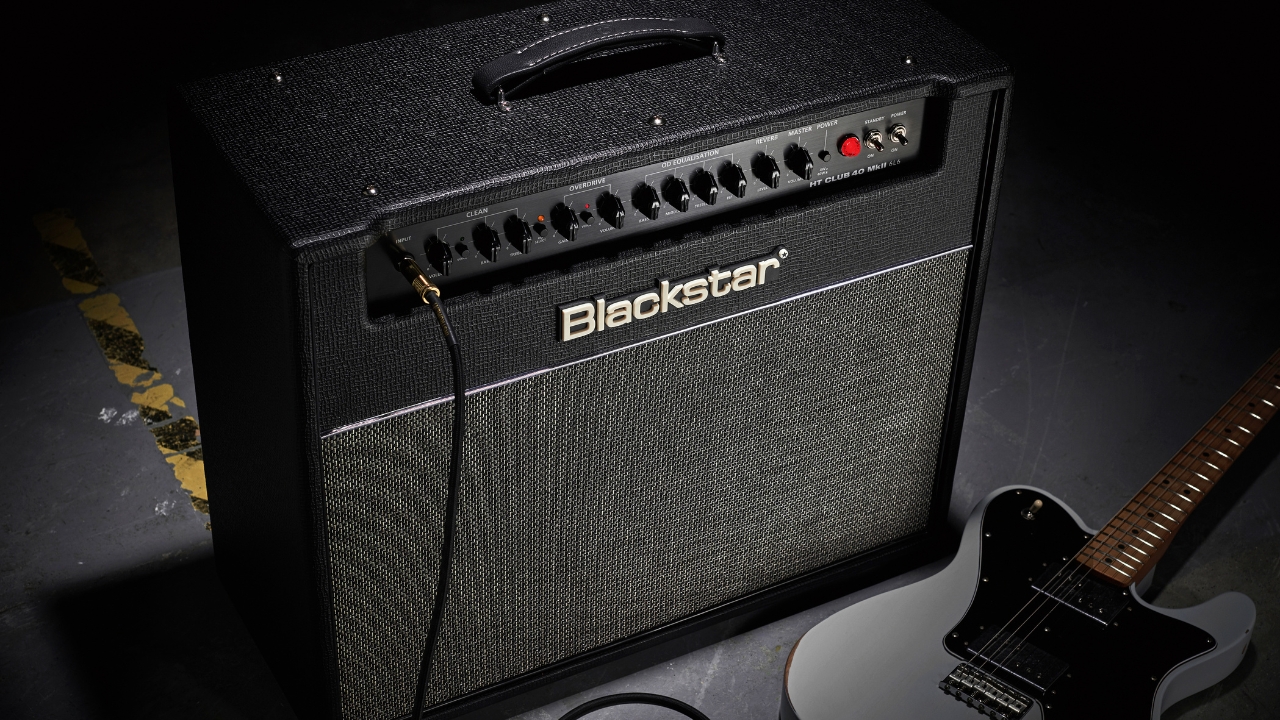
Specifications
Reasons to buy
Reasons to avoid
The HT range from Blackstar has been a firm favorite since its release in 2010, with the Club 40 one of the shining stars of the series. After years of R&D, Blackstar has delivered the hotly anticipated Club 40 MKII. But was it worth the wait?
Bluntly, yes. Still capable of virtually anything you throw at it, the Club 40 MKII is seemingly a perfect blend of power, tweakability, simplicity and fancy added extras, all while remaining super easy to use. 40W of all-tube power provides bags of clean headroom, meaning you won’t have to look any further for that pedal platform amp you always wanted. That being said, it’d be a shame just to set this clean and let your pedals do all the work.
The overdrive channel on this tube amp is another hive of capability, with more than enough gain to satiate the majority of players. Pair this with Blackstar’s I.S.F (Infinite Shape Feature) calling card and you’ll go from Petrucci and EVH territory all the way across the Atlantic, to channel your inner Brian May. Power switching functionality allows you to bring the wattage down from 40W to 4W, so you can keep your tubes glowing without too much blood pouring from your ears.
Read our full Blackstar HT Club 40 MKII 6L6 review
Classic combo amps
If you want to get your hands on some of the most iconic guitar tones of all time, these combo amps will satiate your need for classic amp sounds.
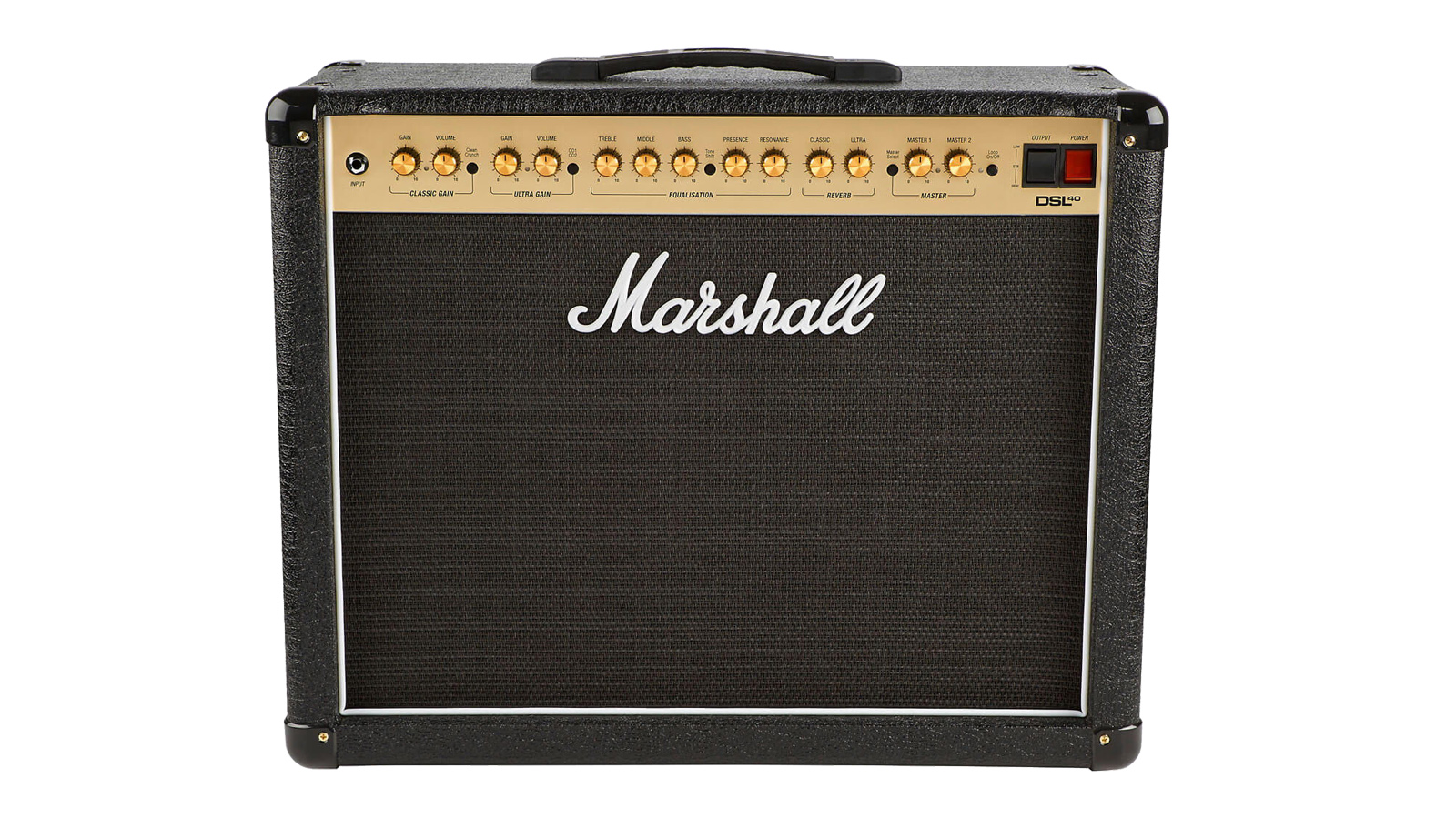
10. Marshall DSL40CR
Our expert review:
Specifications
Reasons to buy
Reasons to avoid
If you’re a fan of Marshall, you’ll definitely be familiar with the DSL range. A near perfect blend of quality and value for money, the DSL40CR is one of the best combo amps we can find for less than $/£1,000.
With ‘classic gain’ and ‘ultra gain’ channels present, it won’t shock you to hear that this amp truly sings when overdriven - but while Marshalls are not especially known for their clean tones, this DSL really pulls something special out of the bag. The 3-way EQ is powerful and exceptionally intuitive, and onboard reverb helps give your playing a bit of breathing room. Dirty, this amp comes to life - and the low output setting provides access to these tones much more easily. 40W of all-tube power is monumental, after all.
Independent presence and resonance controls allow some pretty in-depth tone tweaking, perfect for studio use. This thing sounds great mic’d up, but when that’s just not possible the emulated output comes to the rescue. Marshall has teamed up with Softube to provide an exceptional emulation of the 1960 cabinet - meaning that you needn’t make any noise at all while laying down your guitar parts. All in all, the DSL40CR is a much welcomed update to the DSL line, and definitely worth looking at.

11. Orange Rocker 32
Our expert review:
Specifications
Reasons to buy
Reasons to avoid
Having gigged the Orange Rocker 32 for the last year so, we comfortably say that it’s one of the best tube combo amps money can buy. We’ve never had so many compliments on our guitar tone as we have this, and it’s got some hidden features that we love too.
Our studio engineer always waxes lyrical about this amp thanks to its mid-focused tone that sits perfectly in a mix with minimal tone tweaking required. The clean channel has a single knob and works brilliantly with a pedalboard, whilst a more traditional gain channel with three-band EQ provides some searing tube overdrive tones.
The stereo FX loop is a unique and useful feature, allowing you to run it in stereo or split the two speakers into a wet/dry layout. Paired with stereo reverbs and delays it sounds absolutely phenomenal, and the speakers face slightly outwards to help increase the spread. It’s small for a 2 speaker tube combo but it’s still pretty heavy, which is about the only negative we can say about this brilliant amplifier.
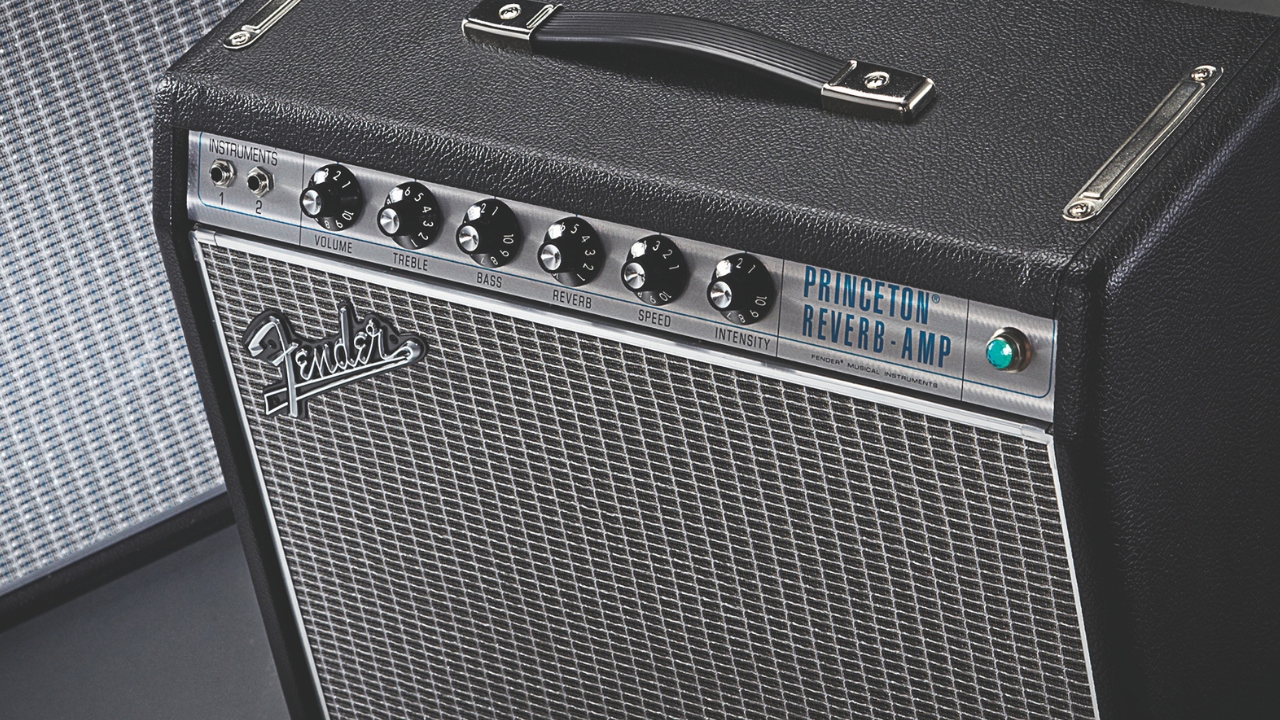
12. Fender ‘68 Custom Princeton Reverb
Our expert review:
Specifications
Reasons to buy
Reasons to avoid
The Princeton Reverb has been a staple of Fender’s amp repertoire since 1964, and few amps sum up the ‘Fender’ sound quite like it.
This ‘68 Custom iteration of the Princeton Reverb pays homage to the iconic look, sound and performance of the ‘silverface’ Fender amps of the late ‘60s, but with a little twist for the modern player. This comes in the shape of a modified tone circuit, which provides you with an earlier onset of overdrive, as well as loads more flexibility with pedals.
Equipped with a 10” Celestion speaker, the tone you’ll get from the ‘68 Custom is a little more modern and punchy than others. For a single 10” speaker in a small cabinet, this Princeton really outdoes itself, pumping some serious air and serious volume. It’s perfect for Fender fans, with the traditional reverb and tremolo onboard and is by far one of the best guitar amps under $1,000 - but be warned - the circuitry involved here is not that of the more traditional ‘blackface’ amps, but more of a modernisation. A more modern interpretation of the Princeton, if you will.
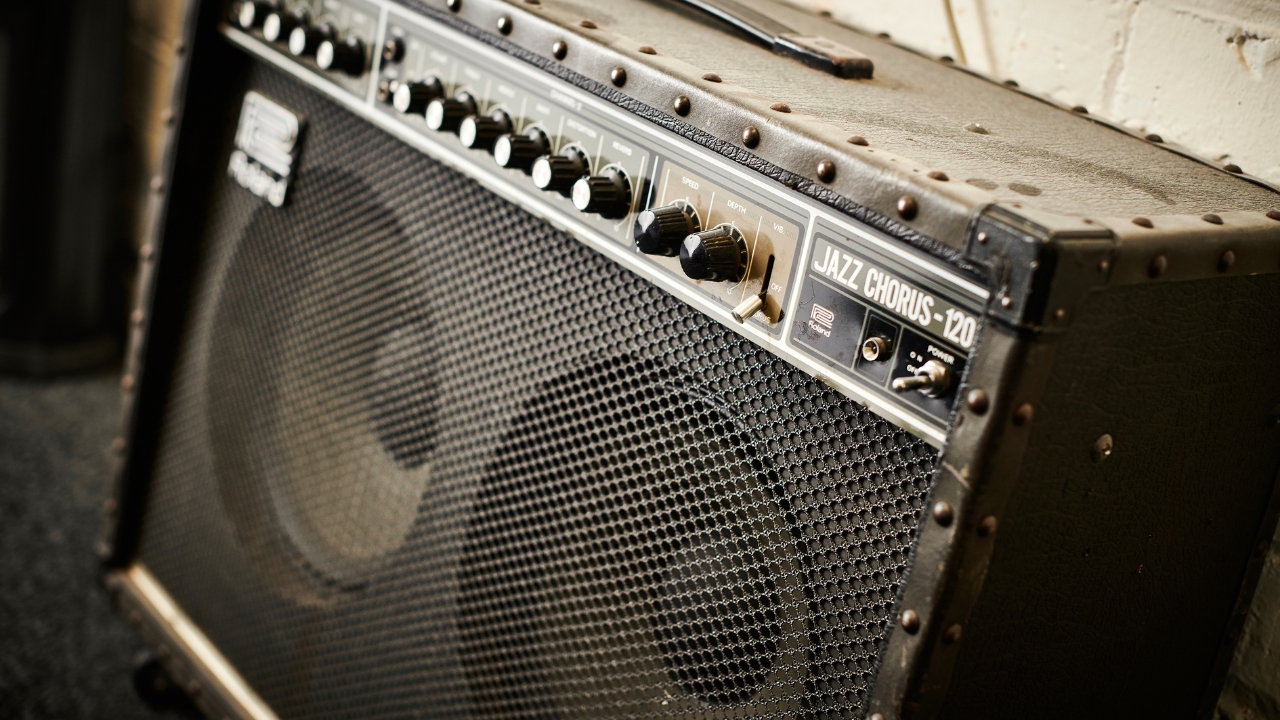
13. Roland JC-120
Our expert review:
Specifications
Reasons to buy
Reasons to avoid
The Jazz Chorus line is Roland’s claim to fame in the world of guitar. This amp has been on seemingly infinite amounts of era-defining records since its introduction in 1975, and it continues to enjoy cult status over 45 years later.
The JC-120 is so-named due to its all-encompassing chorus and humongous 120 watt output - and it’s this fantastic stereo chorus and masses of headroom that makes this amp so desirable. Essentially the JC-120 has two 60W amps inside, which allows for a ‘true stereo’ chorus. Makes you feel like you’ve traveled back to the ‘80s, doesn’t it?
It’s a fantastic pedal platform amp - as it’s super clean and super loud. The second channel features an onboard distortion effect, but in all honesty we much prefer using a dedicated drive pedal. Chances are though, you’re not buying this amp for the gain.
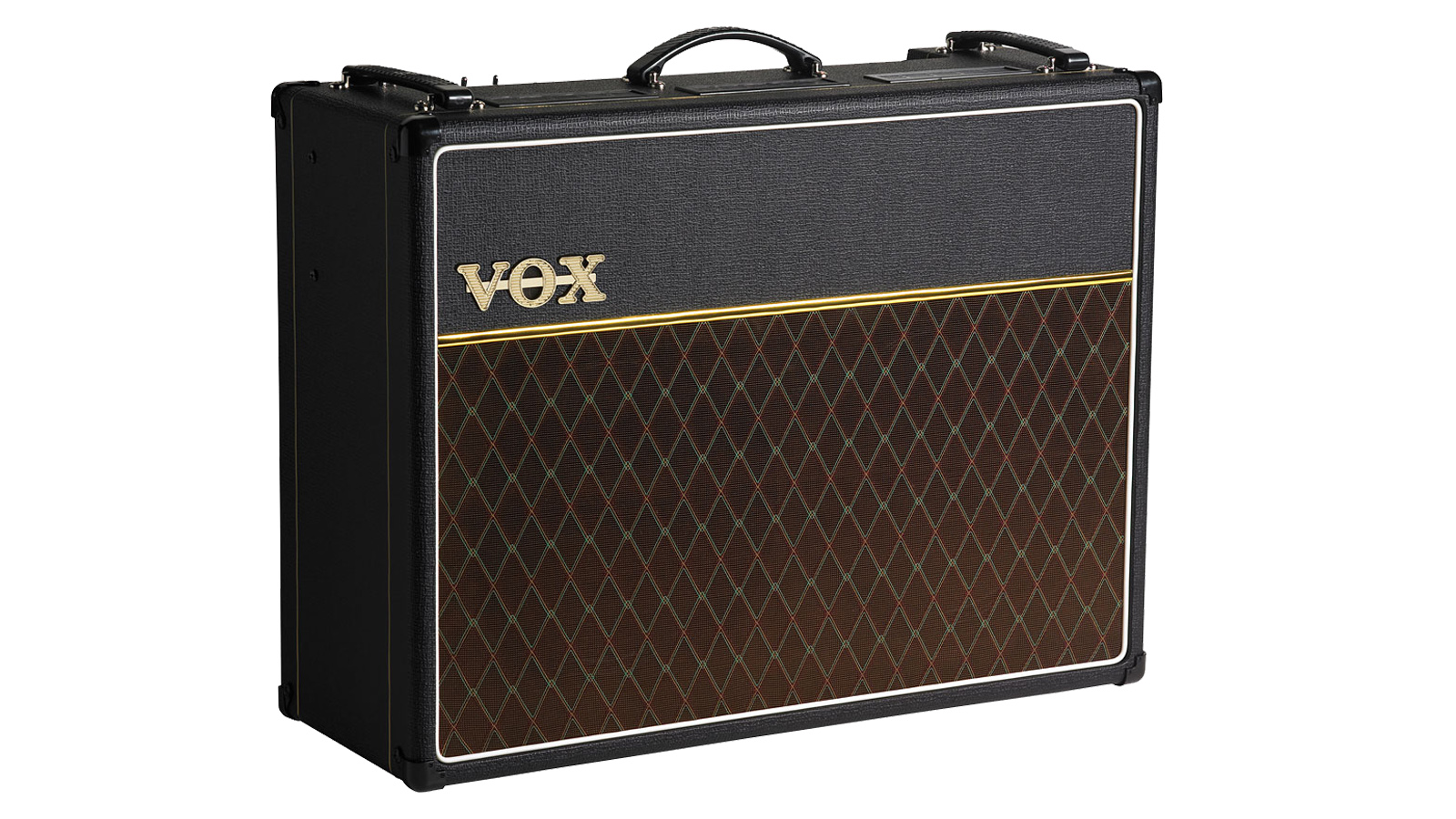
14. Vox AC30C2 Custom
Our expert review:
Specifications
Reasons to buy
Reasons to avoid
Vox amps have been part of the foundation of rock and roll for decades, with the AC30 being their most iconic offering to date. Favored by guitarists like Brian May and The Edge, there’s a certain personality to the AC30 that keeps us coming back for more and more.
Pumping a fairly meaty 30W through two Celestion Greenbacks, there aren’t many situations this amp can’t handle. If vintage-style British tones are your thing, then the AC30’s Normal and Top Boost channels will be right up your street. A delectable onboard spring reverb and tremolo top off this iconic piece of rock architecture.
The AC30C2 can also be employed as a fantastic pedal platform. Clean headroom aplenty, you’ll be able to utilize the true-bypass effects loop to its full potential and populate your signal chain with whatever you fancy.
FAQs
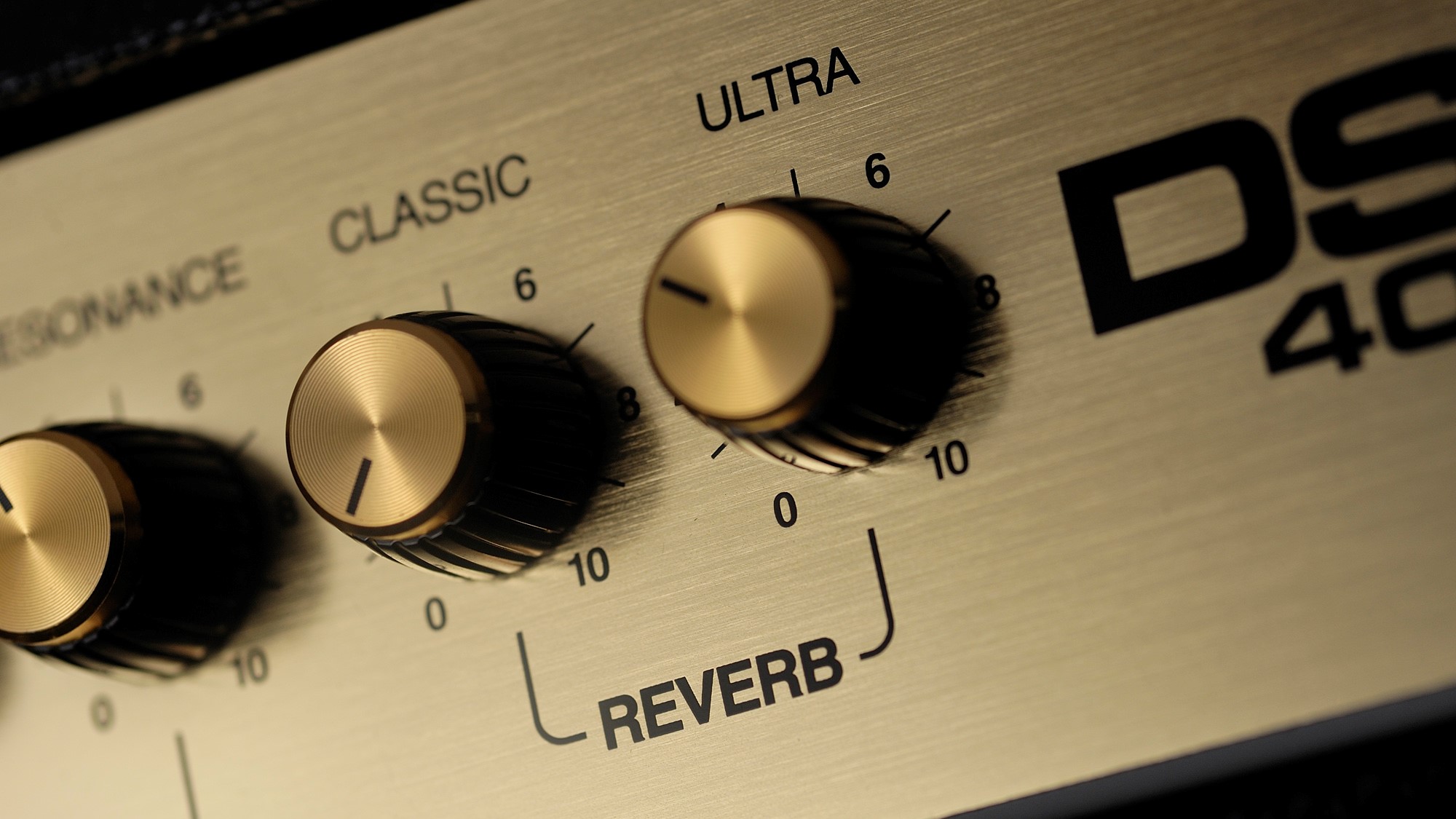
What is a combo amp?
A combo amp is where the circuitry, tubes or digital processors, and the speaker cabinet are all in the same box. This all-in-one design is ideal for anyone who’s tight on space, or just doesn’t want to carry around multiple bits of gear to every gig or rehearsal.
Are tubes better than solid state?
Tube amps (or valve amps as they’re known in the UK) are amps that use glass vacuum tubes to amplify the signal from your acoustic or electric guitar pickups. The signal passes through a set of preamp tubes and power tubes, before exiting the amp through your speaker.
Tube amps are often considered to be ‘the best’ type of amp over digital and solid state amps, and as a result are quite highly sought after. This is because tubes impart a tonal color and influence onto your sound that most digital and solid state amps can’t.
As tubes are an entirely analog form of signal processing, they all respond differently to the signal you input. Turn up the amp, and the signal will start to distort - turn it down, and it will clean up again. It’s this level of ‘personality’ and sensitivity that makes tube amps so desirable.
Solid State amplifiers use electronic transistors to process your guitar signal. Unlike tube amps, they don’t overly influence the tone of your instrument, and they don’t start to ‘break up’ or distort as you turn them up. This makes them absolutely perfect for players who want maximum clean headroom at all times. However, with no natural overdrive or harmonic excitement, your guitar can sound a bit brittle or dry.
That being said, there are many artists that love solid state amps - such as Andy Summers of The Police and Robert Smith of The Cure (who used a Roland JC-120 and JC-160 respectively). There’s a higher degree of control over your sound when using a solid state amplifier, as you don’t need to worry about tubes degrading and your hard-sculpted tone changing. Solid state amps tend to be more reliable too, as tubes can be pretty fragile.
Digital modeling amps digitally recreate your favorite tones through good old fashioned processing power. Many brands such as Line 6, Kemper and Fractal have been creating and mastering the art of digital amp simulation for years, and with every technological advancement, digital amps and amp modelers get ever closer to matching the tone and feel of the real thing.
With most digital amplifiers, you’ve got almost immediate access to any amp you can think of at your fingertips. This makes digital amps - especially units like the Boss GT1000 and Kemper Profiler Stage - absolutely perfect for touring musicians, who likely use many different tones for each song.
What size speaker is best for a guitar amp?
There are no two ways about it - the size of your speaker and amount of speakers in your combo amp will make a huge impact on your guitar tone. Take something like the Orange Rocker 15 or Fender ‘68 Custom Princeton Reverb, for instance. Both of these are small amps, each with one 10” speaker. Smaller speakers will have less bass response than bigger speakers, and will usually have a lower power rating than their larger counterparts. This can mean that they’ll struggle at higher volumes.
Something like the Marshall JVM410C on the other hand - which has two 12” speakers - can not only move a lot more air, but also handle a considerable amount more power. A 12” speaker is a fairly standard choice for guitar amps, as the frequency response tends to be more even across the spectrum. They’re not too bassy, not too bright - a Goldilocks speaker for most amp manufacturers and players.
What is gain on a guitar amp?
Another important consideration to make when looking for the best combo amp is gain. Gain is the amount of signal coming into your amplifier, and a different thing to an amp's volume.
Some amps, like the Fender Deluxe have loads of clean headroom, so they won’t break up until you really get the volume cranked. This makes them perfect for those wanting a clean sound at high volumes, or for those that want to shape their sound further via pedals. Some solid state amps like the Roland Jazz Chorus are known for their clean sound at any volume, again making them a great pedal platform.
Some amps have a dedicated gain knob that allows you to dial in overdrive to your liking. On some models, this will be subtle and you’ll get great crunchy tones, perfect for blues and classic rock. Others will have more gain on tap allowing you to delve further into the realms of hard rock and heavy metal. Most modeling amps allow you to cover all bases, with various different clean and distorted amp emulations built in, though the quality of tones might not be quite as good as the real thing.
What is a pedal platform amp?
No doubt you’ll have probably heard the term ‘pedal platform’ bandied around online, and it’s kind of self-explanatory. A pedal platform amp is usually an amp with only one channel or a large amount of clean headroom - meaning they’ll take any of the best guitar pedals especially well.
The Roland JC-120 is a great example of this. Seemingly endless clean headroom and solid state circuitry means that you’ll get pretty faithful pedal tones from it - as there are no tubes onboard to color your tone in any way.
Tube amps will work with your pedals too, and something like the Fender ‘65 Deluxe Reverb - with loads of clean headroom - is a great choice. You’d likely need a boost or overdrive to get some real gain out of it at lower volumes, and its clean, smooth characteristics are ideal for your modulation effects and anything else you can think of. Just please, leave the Metal Zone out of this.
If you’d rather live without extra pedals, then you need an amp with a few channels, different levels of gain, and different tonalities. Think about which effects you use the most, and whether you actually need or want anything extra going on. Truth be told, keeping things simple can be the key to a great tone.
If all you want is great cleans and great overdrive, then look no further than the Blackstar HT Club 40 MKII or the Marshall JVM410C. They're both killer amps for metal, both with bags of onboard reverb, and FX loops - just in case.
How we choose the best combo amps
At Guitar World, our team consists of expert musicians with years of experience playing and testing various guitar products, including a plethora of guitar amps. As passionate guitar enthusiasts, we understand the significance of achieving the perfect tone and sound, and we leverage our extensive knowledge and practical experience gained from using these products in live performances, recording sessions, and rehearsals to identify the best products for our guides.
To curate our list of top combo amps, we combine practical experience, user feedback, and in-depth discussions with our editorial team to reach a consensus. We take into account several factors such as pricing, tonal versatility, build quality, and portability to ensure that we showcase the very best products available on the market today.
As guitar players ourselves, we understand the importance of having the right gear to create the perfect sound. Therefore, we are committed to providing reliable and informed recommendations to help guitar players find the ideal combo amp to suit their specific needs and preferences. Our ultimate aim is to empower guitar players to unlock their full potential by elevating their sound with the best guitar gear available.
Read more about how we test products and services and how we make our recommendations.
Related buyer's guides
You can trust Guitar World
- Sound even better than before with the best guitar tuners
- Check out the best Tube Screamer clones
- Keep that tone pristine with the best guitar cables
- Keep the neighbors happy with the best headphones for guitar amps
- Play in comfort with the best guitar straps
All the latest guitar news, interviews, lessons, reviews, deals and more, direct to your inbox!

Matt is a Junior Deals Writer here at Guitar World. He regularly tests and reviews music gear with a focus on guitars, amps, pedals, modelers, and pretty much anything else guitar-related. Matt worked in music retail for 5 years at Dawsons Music and Northwest Guitars and has written for various music sites including MusicRadar, Guitar Player, Guitar.com, Ultimate Guitar, and Thomann’s t.blog. A regularly gigging guitarist with over 20 years of experience playing live and writing and recording in bands, he's performed everything from jazz to djent, gigging all over the country in more dingy venues than you can shake a drop-tuned guitar at.
